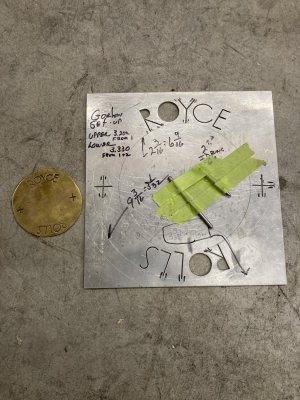See that little nub on the other end of the spindle? That's a follower for any inverse/concave form you clamp above it. The clamp that holds the spindle is normally clamped down tight with the dog of a set screw riding in a groove around the OD of the spindle, preventing it from moving up and down. But properly adjusted, the spindle can move up and down under spring pressure if the dog is backed out. (That's the purpose of the large spring shown in the lower right of the drawing that
@Braeden P posted.
There is a flat bar that extends out from the body of the mill over the top of the spindle. The bar has screw holes for mounting forms. You can custom make anything you want, but it needs to be an exact inverse of whatever you're engraving. It's most useful for simple shapes, like engraving relatively multi-digit numbers around the circumference of a small dial. Without the form, the digits away from top dead center won't be engraved deeply enough (for single digit numbers, it really isn't necessary to use a forming guide).
Gorton also used to sell an adjustable form that had a piece of spring steel with a screw that you could adjust for different diameter dials.
Keep an eye out for sharp taper-shank engraving cutters. They are very convenient (no need to fiddle with collets.
If you do find a collet spindle, try to find one that comes with all the collets!


